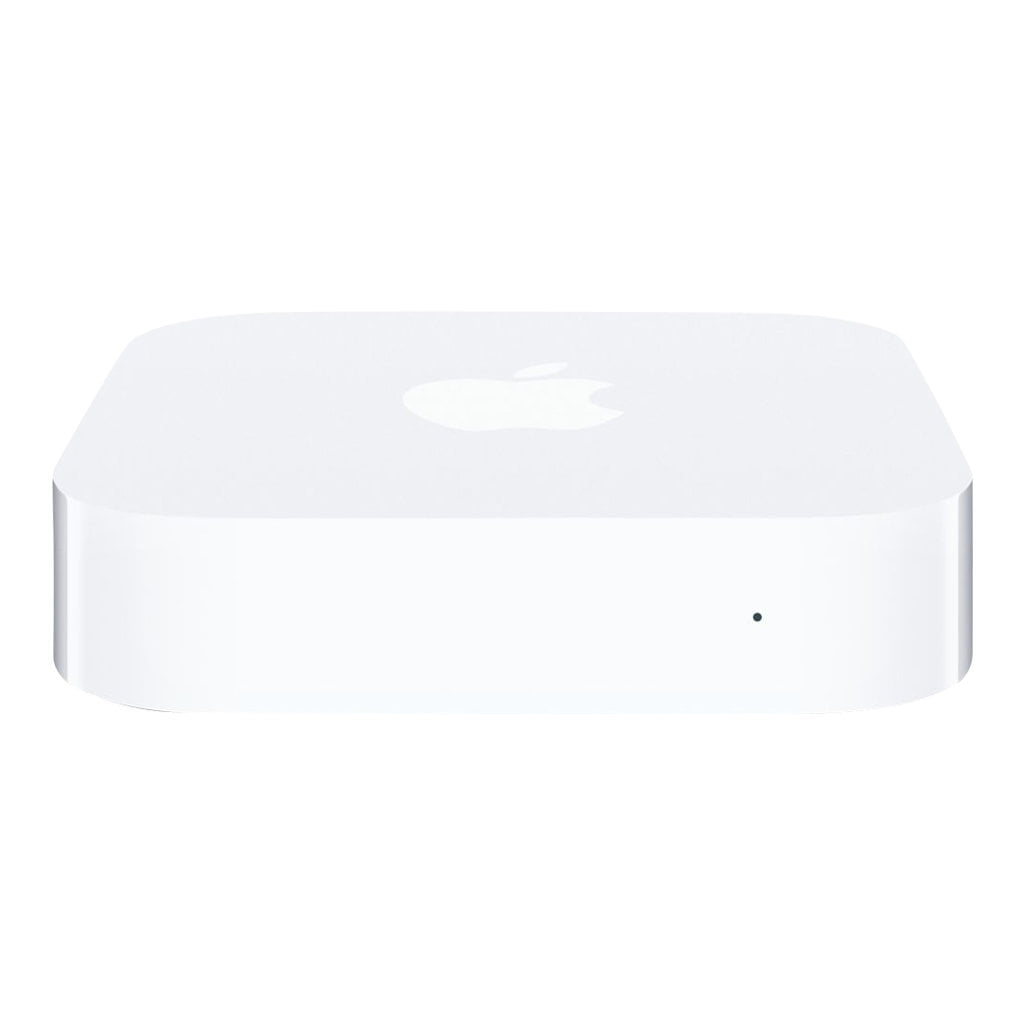
- #Apple airport express models full#
- #Apple airport express models Pc#
- #Apple airport express models mac#
Guest users can’t sniff or have access to Bonjour resources (like shared printers or file servers) or other traffic on the main network, either. Guest networking has also been added, which allows a second virtual network with a unique network name (SSID) and security scheme to be available to visitors or others without providing access to the main network.

Only two particular situations require an Extreme or Time Capsule because of the ethernet limitation: if you have a broadband connection of faster than 100 Mbps, which is uncommon, but becoming more widely available or you are determined to have the maximum possible throughput between ethernet and Wi-Fi devices on the same network. However, the 100 Mbps limit doesn’t affect data exchanges between Wi-Fi devices, which work at the maximum wireless rates available, and it’s easy enough to plug in an inexpensive gigabit ethernet switch to allow the fastest throughput between wired devices. The Time Capsule and Extreme each have a built-in three-port gigabit ethernet (10/100/1000 Mbps) switch, while the Express continues to use 10/100 Mbps ethernet on both its WAN and LAN ports. The Express has two streams, while the Extreme and Time Capsule offer three.
#Apple airport express models full#
In 802.11n, the radio system can use varying amounts of power across the multiple antennas used to send out data to “steer” a signal (think of multiple cue sticks hitting a pool ball to control how it caroms), and create separate data streams at full throughput across different paths in space. The AirPort Extreme and Time Capsule models (since 2009) have one advantage in the radio department over the Express. Competitors have offered relatively inexpensive simultaneous dual-band gateways for years, but those models lack Mac-specific features, such as That’s a significant improvement, and makes the Express a much better value, especially compared with equipment from competing manufacturers, such as Linksys. Having both bands available at once in the 2012 AirPort Express (a feature added in 2009 to the Extreme and Time Capsule models) allows your network to perform at the highest possible speeds no matter how distant a device is from the base station while it remains in range of a signal. (The 5GHz band offers much greater throughput but only at closer distances than 2.4GHz.)
#Apple airport express models mac#
All iPad models, the Apple TV, and all Mac models released since 2006 can use either 2.4GHz or 5GHz. This is also true of a fairly large amount of newer equipment that supports 802.11n, but only for 2.4 GHz connections, which includes all iPhones and iPod touch models with 802.11n, many smartphone and handhelds, and even some newer computers. While the previous AirPort Express (2008) supported 802.11n networking, you had to make a choice to set the Express to use either the 2.4GHz or 5GHz band available for 802.11n, not both at the same time (known as simultaneous dual-band).Īll older 802.11b and 802.11g gear can connect only using 2.4GHz channels. It doesn't include the advanced networking features of its bigger brother - the AirPort Extreme - but for easily setting up a wireless 802.11n access point, and for building a high-end wireless audio streaming system for iTunes, it's a smart choice.AirPort Utility: An AirPort Express can be connected wirelessly, indicated by the dotted line in AirPort Utility, to an existing network to provide fuller coverage.

Simply put, the AirPort Express is a product I found so valuable that I bought one as soon as Apple took back the model I was reviewing.

Apple has made the device as compact as possible, but if you have limited room around the wall socket you're plugging it in to, you may well need to get an extension lead.

But in terms of aesthetics, heed the following warning: The APE is, itself, a gargantuan three-pin AC plug. Or with an optical digital cable it will pass digital audio with bit-for-bit accuracy to a receiver that accepts optical cabling (which is what I did). It has a 3.5-inch headphone-sized socket which, via a standard audio cable, can be plugged into any line-in socket on an audio system. It took less than five minutes to configure a wireless network with WPA2 network encryption, and get my MacBook accessing the Internet through it.īut my main reason for investing in the APE was to stream iTunes content wirelessly to my beloved hi-fi.
#Apple airport express models Pc#
Setting up the APE was painless on both PC and Mac.


 0 kommentar(er)
0 kommentar(er)
